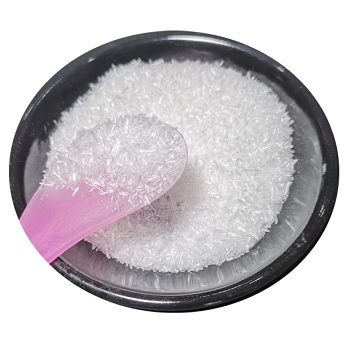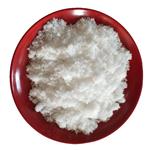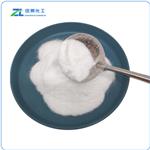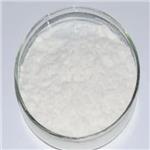Description
Monosodium glutamate, known as MSG, is the sodium salt of the amino acid glutamic acid present in all protein. It is marketed as a white crystalline salt used to enhance fl avor as the monohydrate, C5H8NNaO4 H2O.There are two forms of glutamic acid: L-glutamic acid and D-glutamic acid. The natural glutamic acid found in humans and other higher organism is L-glutamic acid only, whereas processed monosodium glutamate contains both L-glutamic acid and D-glutamic acid along with pyroglutamic acid (C5H7NO3) and other contaminants.

Monosodium glutamate(MSG) is odorless and has little flavor. It works synergistically with other substances found in food proteins such as the nucleotides disodium 5'-inosine monophosphate (IMP) and disodium 5'-guanosine monophosphate (GMP), to produce a pleasing savory taste.
Chemical Properties
white crystalline solid
History
The use of Monosodium glutamate(MSG) as a flavor enhancer is attributed to Kikunae Ikeda (1864 1936), a chemistry professor from Tokyo Imperial University. Ikeda patented Monosodium glutamate(MSG) as a flavor enhancer along with processes used to produce it. The isolated glutamic acid was then purified and converted to MSG. The use of Monosodium glutamate(MSG) as a flavor enhancer began in Japan and Asia, but widespread use of the compound in the United States did not occur until after World War II. Ajinomoto started manufacturing Monosodium glutamate(MSG) in the United States in 1956 (Ajinomoto became affiliated with Kraft General Foods in 1973).
Uses
The safety of manufactured Monosodium glutamate(MSG) has been questioned for the last several decades. Conditions associated with Monosodium glutamate(MSG) symptom complex included numbness in the back of the neck, radiating to the arms; warmth and fatigue in the head, upper back, neck, and arms; facial pressure or tightness; chest pain; headache; nausea; and heart palpitations. There does not seem to be an absolute consensus on the safety of MSG, but for the most part Monosodium glutamate(MSG) is considered safe if consumed in normal quantities. An acceptable daily intake level is not cited by government regulators, but the average person consumes between 0.3 and 1.0 gram of Monosodium glutamate(MSG) daily. Estimates of annual global production of Monosodium glutamate(MSG) range between several hundred thousand tons to as high as 1 million tons. Although practically all Monosodium glutamate(MSG) produced is used in the food industry, a small portion is used for agricultural feed supplements (for swine), pesticides, and pharmaceuticals.
Uses
Monosodium glutamate (MSG) is a flavor enhancer that is the sodium salt of glutamic acid, an amino acid. It is a white crystal that is readily soluble in water. It intensifies and enhances flavor but does not contribute a flavor of its own. It may be present as one of the amino acids or in a free form, which is how it effectively enhances the flavor of foods. It is produced through a fermentation process of molasses. It is used at 0.1–1.0% in meats, soups, and sauces.
Definition
A white crystalline
solid compound, made from
soya-bean protein. It is a sodium salt of
glutamic acid used as a
flavor enhancer, particularly in Chinese cuisine. Monosodium glutamate can cause
an allergic reaction in people who are ultrasensitive
to it.




